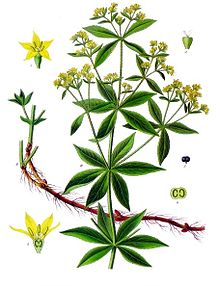What Colorant should I use?
There are a few different options out there for coloring your soap. As you read about them and learn you’ll be anxious to get started and may even find that I may have missed a few as you come up with your own soap coloring ideas.
Plant Based Colors

Plants, spices, seeds and herbs can all be used for their colorants. Some plant based colors are more stable than others, and some may bother the skin or stain clothing, so make sure you find out how stable the color is before using it.
You can get wonderful color from spices, but be careful with them as well because spices like chilli powder, cinnamon and cloves can be very irritating to the skin.
These plant-based materials can be added to your soap or you can make a tea by steeping the plant material in your liquids.
Natural Colorants are natural and as such can be difficult to achieve the color you are wanting, but saying that, you can end up with some beautiful colors in the natural soap.
I have used the following with great results:
- Alkanet Root – Purple colors
- Annatto – Yellow and Gold
- Turmeric – Shades of orange
- Cocoa Powder – Shades of brown
- Cinnamon – Brown colors (avoid on sensitive skin)
- Indigo Powder – Dark Blue
- Madder Root – Red to Purple
- Spinach – light green
Coloring with Clays

Clays come in shades of white, brown, red and gray, they are a very fine grain that comes from rock or soil material with traces of oxides and organic matter. The color in the clays comes from the oxides in the rocks.
There are some clays out there that are a simple clay with mica’s or oxides added to produce the required color.
Some clays that are often used in soap coloring are:
- French Green Clay – Natural Green Color
- Kaolin Clay – White
- Rose Kaolin Clay – Light Rose color
- Rhassoul Clay – Shades of Red
Micas from the Earth or Not
Micas are a natural product produced from the Earth, but the cosmetic grades are not.
 Natural mica is a silicate mineral that is extremely expensive to mine; therefore natural micas are used in electronics, but not in soap and cosmetic products.
Natural mica is a silicate mineral that is extremely expensive to mine; therefore natural micas are used in electronics, but not in soap and cosmetic products.
The cosmetic grade of mica is synthetically produced and are the same micas that are used when making your eye shadow, lipstick and other mineral makeups.
Micas will give your soap color with a bit of a sheen to it, but not all micas can be used in soap making. Some will fade or change color so be sure to ask about that if you are ordering Micas for coloring you soap.
Oxides and Ultramarines
Oxides and Ultramarines are not technically natural, they are manufactured but do duplicate natural minerals. They are produced for their purity because they are actually better than natural oxides. Yes that’s right Better.
Synthetic Oxides are used in soap making because they are better than natural oxides in that  natural oxides are often contaminated with toxic metals such as mercury, lead, and arsenic.
natural oxides are often contaminated with toxic metals such as mercury, lead, and arsenic.
The synthetic oxides are manufactured in a lab using a process that leaves the finished product 98% pure.
Sometimes natural is not always the best as in this case. This cosmetic colorant is made in order to meet approval.
Oxides and Ultramarines are very stable and will provide a color to your soap that will last.
If you choose to color with these cosmetic colors your will only use approximately .1%, so even though the synthetic colorants are safer than natural you would have to say your soap is only 99.99% natural when using oxides.
I don’t know what you think, but I usually choose the oxides when I want a good stable color.
#handmadesoap #naturalsoap #makingsoapnaturally #soapmaking #soapmaking #soaps #artisansoap #bathandbody #cpsoap #coldprocesssoap #etsy #soapbase #soapcrafter #soapmaker #soaping #soapcrafting #soaphandmade #soap #giftidea #christmas #barsoap #handmadesoap #natural #organic #skincare #coldprocess #soapsupplies #soapcolor #coloringsoap
© 2016 – 2019, Tes. All rights reserved.
How cool is this – was it very hard to do, always looking for things to do with my kids. Love the creativity and beautiful ideas. Really enjoyed this.
Hello JoEllen,
I would not recommend making cold process soap with children, but a fun thing to do would be the melt and pour as that is basically all you have to do. Melt it, color it and pour into molds of your choice. Here is a link Melt and Pour to give you some information. In the last few years there are some M&P coming out with less chemicals.
Interesting that natural is not always better than products manufactured in the lab!?
You learn something every day and that comment alone works very well me as I keen on protecting the environment as mush as I can and that includes making my own soap!
Hi John, I’m still learning, and keeping things natural and protecting the environment area also very important to me. Happy soap making! Teresa